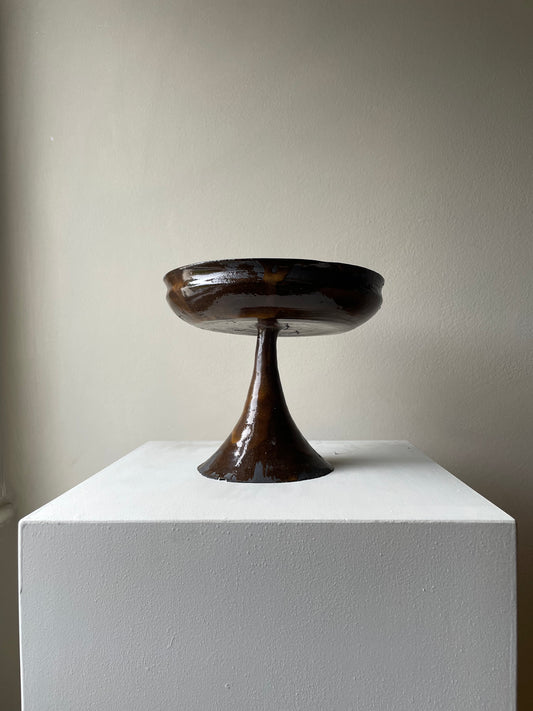Vessels
How to Create A Minimalist Space
What is Minimalist Design?
Minimalist interior design emphasizes simplicity, clean lines, and a clutter-free environment. It’s about creating a space that is functional, free of distractions, and aesthetically appealing through the careful use of neutral colors, uncluttered spaces, and thoughtful furniture choices. In a minimalist home, each piece has a purpose, adding value while eliminating the unnecessary.
How to Design Your Home with Minimalist Style
1. Focus on Functional, Uncomplicated Furniture
Minimalist spaces are defined by their functional and straightforward furniture, which brings comfort without overwhelming the senses.
- Streamlined Sofas and Chairs: Opt for low-profile sofas with clean, geometric lines. Look for upholstery in neutral colors like light grey, cream, or black. The focus should be on comfort and simplicity.
- Modern Dining Tables: Choose a simple, wooden or metal dining table with a slim profile. A minimalist dining table may be paired with sleek dining chairs that have leather or fabric seating, with no elaborate decoration.
- Multifunctional Pieces: Minimalist design often makes use of multi-functional furniture—such as an ottoman that doubles as storage, a wall-mounted desk for compact spaces, or a daybed that serves as both a seating area and a guest bed.
2. Keep a Neutral Color Palette
The color palette in minimalist design should be soft, natural, and restrained. It is the foundation for achieving a serene and cohesive space.
- Monochrome Tones: Use white, grey, beige, and taupe as the primary colors in your design. These colors reflect natural light well, giving the space an airy feel.
- Muted Accents: Add contrast using muted accent colors such as charcoal grey, soft black, or muted green. These accents can be introduced through decor items, cushions, or small furniture pieces.
- Natural Wood Tones: Integrate natural wood elements—light oak or birch woods work well to soften the space while maintaining the minimalist aesthetic.
3. Less is More: Avoid Clutter
The hallmark of minimalist design is a clutter-free space where every item has a place and a purpose.
- Concealed Storage: Use furniture with hidden storage to minimize visual clutter—like a bed with built-in drawers, or cabinets with clean facades. Store items away so that surfaces remain open and unobstructed.
- Declutter Regularly: Keep only items that bring joy or have clear functionality. In a minimalist home, it’s important to curate possessions, whether that’s limiting the number of decorative pieces or reducing kitchen gadgets to only what’s necessary.
- One Statement Piece: Instead of filling a room with decor, choose one or two statement pieces. This could be a large piece of abstract art, a sculptural light fixture, or a designer chair that stands out without crowding the space.
4. Embrace Natural Light and Simple Window Treatments
Minimalist homes focus on creating bright, open spaces that are flooded with natural light.
- Maximize Natural Light: Use sheer curtains or simple roller blinds to maintain privacy while letting natural light fill the room. Avoid heavy drapes, which can make the space feel enclosed.
- Strategic Lighting: Complement natural light with modern light fixtures. Use pendant lights or floor lamps with sleek, linear designs to maintain a clean aesthetic. Look for soft, warm lighting that adds warmth to the room without overpowering its simplicity.
5. Quality Over Quantity in Decor
Decor in minimalist design should be understated and meaningful. It’s all about choosing pieces that bring value to the space.
- Art with Restraint: Choose simple, abstract art with muted colors that complement your palette. A single large canvas or framed photograph can serve as a focal point in the room without overwhelming the senses.
- Greenery: Introduce one or two potted plants for a natural element that adds color without being overpowering. Plants like snake plants, succulents, or a fiddle leaf fig are great options that align with the minimalist aesthetic.
- Textured Accents: To keep the space from feeling cold, add subtle textured accents. This could be a woven wool rug, a linen throw blanket, or a ceramic vase. Textures can add depth while still keeping the overall look refined.
6. Use Clean Lines and Open Spaces
A sense of openness and flow is key in minimalist design, achieved through the strategic use of space and furniture.
- Open Floor Layout: Avoid overfilling a room with furniture. Arrange pieces with an emphasis on open spaces, ensuring there is breathing room around each item. This helps create a sense of flow throughout your home.
- Sleek Surfaces: Use furniture with clean, smooth surfaces—like a glass coffee table, a matte-finished console, or a glossy kitchen counter. Simple, reflective surfaces can make a small space feel larger and more open.
- Hidden Technology: Keep electronic devices and cables concealed where possible. Use cord management solutions to reduce visual distractions, and opt for furniture that includes compartments for electronics.
7. Bring in Natural Materials
Natural materials help create warmth in an otherwise simple and clean design. They add an element of the organic, which makes a minimalist space feel more welcoming.
- Wood Accents: Add elements like wooden coffee tables, stools, or shelves. Light-colored woods work best in minimalist design, adding warmth while maintaining an airy atmosphere.
- Stone and Concrete: Materials like stone, concrete, and marble can add sophistication to minimalist spaces. Use marble countertops in the kitchen or a concrete side table in the living room to add a subtle touch of luxury.
- Fabric Choices: Use natural fabrics such as linen, wool, or cotton for curtains, upholstery, and bedding. These materials provide a simple yet inviting feel that complements the minimalist aesthetic.
Tips for Designing Different Spaces in Minimalist Style
Living Room: Open and Inviting
- Furniture Arrangement: Keep furniture to a minimum and prioritize open space. A modular sofa in a neutral tone, a low-profile coffee table, and one statement armchair are enough to create a cozy yet uncluttered living area.
- Minimalist Decor: Add a single piece of large art on the wall or one potted plant in a corner for decor that feels intentional rather than excessive.
Bedroom: Peaceful Retreat
- The Bed: Choose a platform bed with a clean design, paired with crisp white or neutral bedding. Limit decorative pillows to one or two in complementary tones.
- Functional Nightstands: Use simple nightstands with hidden storage to keep personal items out of view. A small reading lamp in a sleek design is all you need to complete the look.
- Limited Decor: Consider a single decorative vase, one framed print, or a small potted plant on the nightstand to keep the space serene and free of distractions.
Kitchen: Efficient and Clean
- Cabinetry: Opt for handle-less cabinets in a matte finish to keep the kitchen streamlined. Integrated appliances maintain a clean, cohesive look.
- Counter Space: Keep countertops clear except for a few essential items, such as a simple wooden cutting board or a set of glass canisters.
- Minimal Hardware: Use sleek, stainless steel faucets and understated cabinet pulls to maintain a polished, minimalist appearance.
Embrace the Essence of Minimalist Living
Minimalist design is about creating a living space that feels calm, open, and thoughtfully curated. By focusing on quality over quantity, emphasizing functionality, and eliminating unnecessary clutter, you can transform your home or apartment into a serene haven. Whether it’s a cozy apartment or a spacious home, minimalism can bring a sense of balance and tranquility that enhances your everyday life.
Shop Minimalist Decor and Furniture at George Vincent
Explore our curated selection at www.georgevincent.com to find timeless furniture, decor, and design elements that embody minimalist elegance and help you create a peaceful and beautiful space.







